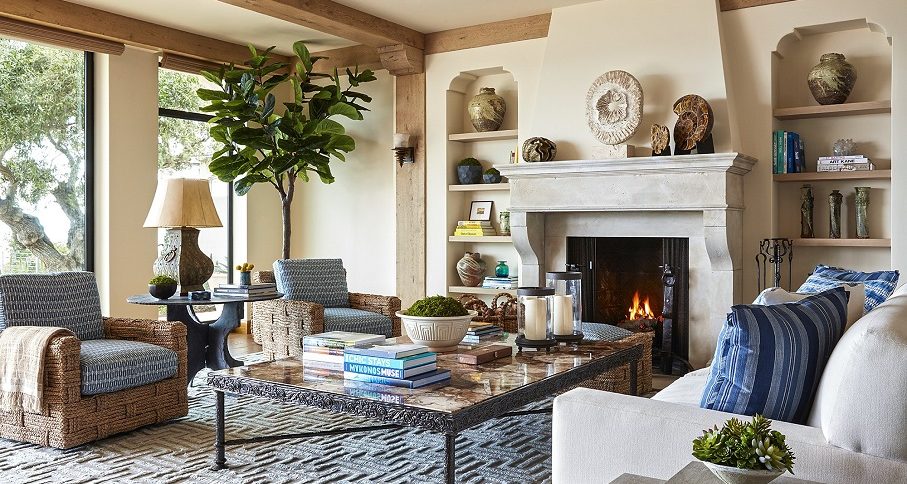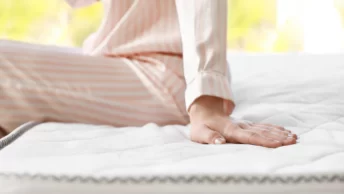Table of Contents:
- The Allure of Vintage: Why Old Is Gold in Fashion
- Modern Fashion: Keeping Up with the Trends
- Finding Your Style: Blending the Old with the New
- Shopping with Strategy: Where to Find Fashion Gems
- Integrating Vintage Pieces into Everyday Wear
- Seasonal Considerations: Adapting Your Wardrobe
- Creating a Cohesive Closet: Organizing Your Fashion Finds
- Fashion Investment: When to Splurge and When to Save
Key Takeaways:
- Vintage fashion provides a timeless appeal and can be environmentally and economically beneficial.
- Mixing vintage and modern styles requires understanding each era’s influence and a strategy for shopping and integration.
- Personal style should be guided by inspiration and individuality, leveraging various sources for modern flair.
- Careful tailoring and customization can take fashion choices from generic to distinctively personalized.
The Allure of Vintage: Why Old Is Gold in Fashion
Vintage fashion invokes a sense of nostalgia and offers a glimpse into the past, bringing with it a charm that modern trends often seek to replicate. The allure of vintage lies in its aesthetic appeal and its ability to tell a story. Each piece holds its history, making it more than just attire but a conversation starter. Distressed leather jackets, retro dresses with playful patterns, and timeless denim imbued with the past create a montage of history through clothing.
Beyond aesthetics, vintage clothing dramatically benefits the environment and your wallet. With today’s growing awareness around sustainability, integrating pre-loved pieces into your wardrobe is both a statement and an intelligent move.
Moreover, the influence of vintage design is ever-present in contemporary fashion. Designers and brands frequently draw inspiration from the past, incorporating retro elements into new collections. This cyclical nature of fashion ensures that vintage pieces always stay in style but instead evolve within modern wardrobes. High-end fashion houses often revisit styles from the 60s, 70s, or 80s, infusing them with contemporary materials or cutting-edge designs. This intersection of past and present is where style becomes timeless, allowing individuals to make bold fashion statements that transcend the current moment.
Modern Fashion: Keeping Up with the Trends
The pace of modern fashion is unrelenting, as trends emerge and recede with each passing season. To create a harmonious balance in your wardrobe, it is crucial to discern between ephemeral fads and enduring styles. Investing in high-quality modern pieces that reflect a timeless design philosophy ensures longevity in your wardrobe. Aspects like clean lines, neutral palettes, and versatile designs underpin garments that will hold up as fashion tides change. These pieces serve as a foundation to add character with vintage accessories or bold statement wear.
While keeping up with the latest trends can be an exciting aspect of fashion, it’s also essential to make informed decisions that align with personal style rather than just the zeitgeist. Sites such as Anthropologie offer a blend of contemporary styles that draw on classic designs, allowing you to select trendy pieces yet likely to remain in vogue for seasons to come. This forward-thinking approach to modern shopping enables one to acquire clothing that complements vintage finds and reflects the current fashion narrative while foreseeing its longevity.
Finding Your Style: Blending the Old with the New
Discovering your distinct style is a journey that marries personal preferences with sartorial history. To blend vintage and modern effectively, one must first identify their fashion influences and the eras that resonate most. It’s about creating a visual dialogue between different periods within your wardrobe. This may mean combining a Victorian-era lace blouse with a sleek minimalist skirt or pairing a 1950s rockabilly dress with contemporary block-heeled boots. The result is a testament to fashion’s enduring legacy and constant evolution.
The key to mastering this blend is understanding how to match the intricate details of vintage clothing with the sleek, contemporary lines of modern apparel. For instance, a classic vintage blazer can be paired with a pair of minimalist stylish trousers for a look grounded in history and relevant to today’s fashion landscape. Accent pieces, like a chunky heirloom necklace or a delicately embroidered scarf, can bring layers of texture and depth to an otherwise simple outfit, creating an ensemble as unique as it is stylish.
Shopping with Strategy: Where to Find Fashion Gems
As you embark on the quest to find the perfect blend of vintage and modern items for your wardrobe, it’s essential to have a strategy in place. Knowing where to look for these fashion gems can save you time and ensure you acquire pieces that resonate with your style. For vintage treasures, thrift stores, estate sales, and specialized vintage shops are the usual haunts. These places often house unique items from bygone eras that can add a touch of history to your fashion narrative.
For contemporary fashion pieces, explore boutiques, department stores, and online retailers that offer curated collections of the latest styles. Many modern retailers understand the value of transcending fleeting trends and offer lines that nod to the classic, ensuring their pieces can mingle with vintage finds. The convenience of online shopping also means that you can often find reviews and styling suggestions to aid in your decision-making process.
Integrating Vintage Pieces into Everyday Wear
Marrying vintage treasures with your daily wardrobe can be delightful and rewarding. The key is considering condition, wearability, and how each piece can be mixed with more contemporary garments. For example, an ornate 1920s sequined top might be toned down with plain high-waisted jeans for a casual yet chic look. Initialized by differentiating decorative pieces from everyday wear, you carefully introduce the former into the classic rotation.
When maintaining vintage clothing, it’s essential to account for its age and the care it needs. Many vintage items require delicate handling, from hand washing to specific storage methods. Investing time into preserving these garments is not only practical, ensuring their longevity, but also an ode to their historical significance. Fashion is more than the fabric; the respect and narrative come with each sartorial choice.
Seasonal Considerations: Adapting Your Wardrobe
As seasons change, so do our wardrobe needs. Embracing this shift is critical to maintaining a relevant and functional wardrobe that marries vintage with modern sensibilities. During warmer months, lightweight fabrics and brighter colors in vintage collections can complement the season’s vibe, pairing well with contemporary, breathable textiles. Conversely, in colder seasons, layering becomes an art form. A vintage cardigan or antique brocade vest can be beautifully layered over modern staples to combine warmth with a nod to the past.
But it’s not just about staying on trend or managing temperatures; it’s about exuding a style that’s adaptable and timeless throughout the year. Key pieces like a vintage trench coat or classic boots can traverse the seasonal divide, while strategic pairings with modern attire can refresh the look. Seasonal wardrobe transitions provide an excellent opportunity to reassess your collection, mix, and match, and get creative with ensembles that reflect a respect for tradition and a nod to current fashion narratives.
Creating a Cohesive Closet: Organizing Your Fashion Finds
Building a wardrobe that harmoniously combines vintage and modern elements requires a degree of organization. Having a clear idea of the pieces you own and how they relate to one another can streamline your getting-ready process and ensure you make the most of your wardrobe. Begin by categorizing clothing by type, era, or style—whichever system makes it easy to visualize potential combinations.
An organized wardrobe can also help ward off the temptation to over-consume. By clearly seeing what you have, you’re better placed to identify gaps or areas for development. This structured approach can also minimize the clutter that often clouds style judgment, allowing you to be more thoughtful and intentional with your fashion choices.
Fashion Investment: When to Splurge and When to Save
Building a wardrobe with vintage and modern pieces can often involve financial decisions. Determining when to invest in a high-quality item versus when to find a bargain is a balancing act. Some vintage items might command higher prices due to their rarity or the era’s cachet. Meanwhile, modern luxury items might be worth the splurge if they’re classic enough to stand the test of time.
Moreover, investing in timeless foundational pieces from reliable modern retailers and pairing them with distinctive vintage finds can be a practical approach to fashion. This strategy allows you to allocate your budget wisely while building a robust wardrobe that carries the weight of history and the freshness of the present day. Remember, the true worth of garments goes beyond their price tags—it’s about the versatility, quality, and personal meaning they add to your life.







